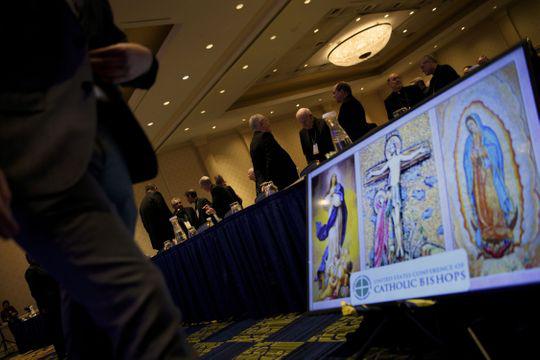|
Catholic Church must embrace reality of the sexual nature of its priests
By Lou A. Bordisso
Many Catholics and other people of good will are disgusted with the sexual scandal cover-ups, smokescreens and veil of secrecy postulated by bishops and their apologists. The shameless rationalization repetitively advanced by church authorities for being deceptive, deceitful and dishonest is plausible deniability is unacceptable. My late Irish-Catholic mother often reminded me to “Tell the truth and shame the devil” as I was growing up. Given the enormity of clergy sexual scandals, there is no better time than the present to tell the truth or ever be labeled as a complicit collaborator and/or guilty of the “sin of omission.” Increasingly, it seems as though not a day goes by without a media story about sexual allegations, charges and convictions against Roman Catholic priests and some bishops. The stories of illicit sexual activity range from the sexual abuse of children by priests to bishops keeping female mistresses or male lovers. Celibacy research studies among Catholic clergy suggest that gay, straight, and bisexual priests are significantly sexually active, and many priests outright reject mandatory celibate chastity. The largest empirical research to date by Richard Sipe studied 1,500 Catholic priests over the period of 25 years and concluded that fewer than 50 percent of Roman Catholic priests in the United States even attempt celibacy, while only 2 percent achieve total celibate chastity. A survey of priests by Richard Wagner noted that his sample of 50 gay priests respondents were sexually active and 96 percent acknowledged having same-sex contact twice-a-week. In 1992, I researched the genital-sexual behaviors of 59 Roman Catholic priests in the United States and Canada. My findings suggested a statistically significant percentage of both homosexual and heterosexual priests in the study were sexually active. Gay priests were more sexually active than their heterosexual counterparts. Nearly half of the sample of heterosexual priests reported being in a long-term relationship that included sexual activity. Clearly, the empirical data strongly indicates that Roman Catholic clergy are challenging the traditional orthodox definition and praxis of celibate chastity. Based on my clinical experience combined with the scholarly research, I have concluded that there are as many definitions of celibacy as there are priests. Catholic laity in the pews expect celibate chastity to mean that priests are not to marry and under no circumstance are they allowed to engage in sexual activity. In contrast, as demonstrated above, Catholic clergy based on their definitions and behaviors, are clearly at odds with the orthodox and traditional definitions and practice of celibacy. Given the reality of priestly sexual activity and no matter where a priest may find himself in life, he recognizes and embraces professional and ethical boundaries and, at a minimum, vows not to betray the trust of those in his pastoral care. Priests have a moral and ethical responsibility to strive to live a life of fidelity in accordance with their informed conscience and ecclesiastical expectations. Similarly, church law and ecclesial authorities have a duty to embrace the reality rather than the ideal of priestly celibate living while encouraging compassionate reimaging, revisioning and rethinking of celibacy chastity going forward for the sake of corporate integrity. Contact: Dr.LouBordisso@aol.com
|
.
Any original material on these pages is copyright © BishopAccountability.org 2004. Reproduce freely with attribution.
